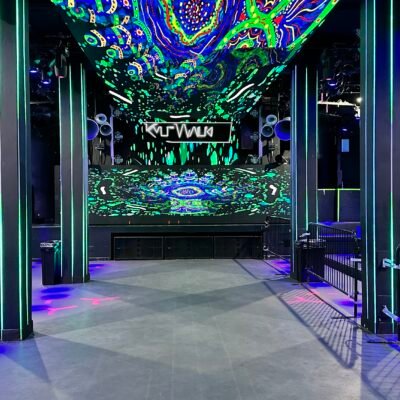The rollout of 5G networks across the USA has sparked a wave of excitement, investment, and innovation. Promising lightning-fast internet speeds, ultra-low latency, and the ability to connect millions of devices at once, 5G is more than just an upgrade—it’s the future of connectivity. From smart cities and driverless cars to telemedicine and gaming, 5G is laying the foundation for the next generation of digital transformation.

According to the Federal Communications Commission (FCC), 5G is now live in most urban areas and is expanding rapidly to suburban and rural regions. But what does this mean for the average American? Let’s break it down.
What Makes 5G Different From 4G?
Before we talk about the implications, it’s essential to understand what sets 5G apart from its predecessor, 4G.
- Speed: 5G can be up to 100 times faster than 4G. You can download a full HD movie in seconds.
- Latency: The response time of 5G is under 1 millisecond, making real-time interactions smoother.
- Capacity: 5G can support up to 1 million devices per square kilometer.
These differences open the door to technologies that previously seemed like science fiction.
Major Carriers Leading the 5G Rollout in the USA
Several major telecommunications companies have taken the lead in deploying 5G networks:
- Verizon: Focused on ultra-wideband 5G in dense urban areas
- AT&T: Offers a mix of low-band and mid-band 5G coverage
- T-Mobile: Known for its widespread low-band 5G network, now expanding mid-band
- Dish Network: A newer player building a cloud-native 5G network from scratch
Each company uses different spectrum bands—low, mid, and high (mmWave)—to balance speed and coverage.
Impacts on Everyday Life
1. Enhanced Mobile Experience
Whether streaming videos, gaming, or video calling, 5G makes everything faster and smoother. People can expect less buffering, clearer video quality, and real-time gaming with no lag.
2. Remote Work and Education
With more people working and studying from home, 5G ensures a stable, high-speed connection. This reduces interruptions in video conferencing and boosts productivity.
3. Smarter Cities and Homes
Cities across the USA are beginning to install 5G infrastructure to enable smart traffic systems, waste management, and public safety monitoring. In homes, 5G allows better control of smart appliances and IoT devices.
4. Healthcare Transformation
Telemedicine has already seen a major boost due to 5G. It enables doctors to consult with patients remotely using high-quality video, and in the future, it could even power remote surgeries with robotic tools.
5. Industrial and Agricultural Advancements
In factories, 5G supports automation, predictive maintenance, and real-time analytics. On farms, sensors connected via 5G help monitor crops and soil conditions for better yields.
Challenges of 5G Rollout in the USA
Despite its potential, 5G still faces several hurdles.

- Infrastructure Costs: Building thousands of small cell towers is expensive and time-consuming.
- Spectrum Availability: Mid-band spectrum, which offers the best balance of speed and coverage, is limited and highly contested.
- Rural Access: Many rural areas still struggle with basic 4G coverage, let alone 5G.
The government has taken steps to address these issues through funding initiatives like the Infrastructure Investment and Jobs Act, which allocates billions to improve broadband access nationwide.
Security and Health Concerns
Some groups have raised concerns about the safety and privacy risks associated with 5G.
- Cybersecurity: With more connected devices, the risk of cyberattacks increases. Network providers are investing in stronger encryption and monitoring systems.
- Health: Numerous scientific studies, including those by the FDA, show no credible evidence that 5G causes harmful health effects.
Still, continuous research and regulation are needed to maintain safety and public trust.
Future Implications of 5G Connectivity
As 5G becomes the standard, we can expect a wave of technological innovations that will redefine how we live, work, and interact.
- Autonomous Vehicles: Real-time data exchange between cars and traffic systems will improve safety and reduce congestion.
- Augmented and Virtual Reality: With ultra-low latency, VR and AR will feel more lifelike and responsive—benefiting gaming, education, and virtual meetings.
- Next-Gen Wearables: Smart glasses, health monitors, and other wearables will thrive with faster connectivity and data exchange.
- Smart Factories and AI: Industries will be able to run machines and robots with real-time control and feedback.
Final Thoughts: The Road Ahead
The 5G rollout in the USA is not just about faster smartphones—it’s about enabling a digital future. While challenges remain in infrastructure, rural access, and security, the momentum is undeniable. Policymakers, telecom companies, and innovators must work together to ensure 5G benefits everyone—not just urban tech hubs.
Whether you’re a student, business owner, or consumer, 5G will impact your life sooner than you think.
Want to Learn More?
Check out CTIA’s 5G overview and FCC’s 5G Fast Plan to explore how the U.S. is building the digital backbone of tomorrow.
Also Read – Quantum Leap: How USA Is Building Superfast Future Computers






